Geo-targeting is a tactic which allows your ads to appear in those geographic location where you'll find the right customers, and restrict it in the areas where you don't – this will help your return on investment (ROI) to grow. We can also say that, geo-targeting is important if you want the maximum outcome from your restricted advertising spend. It has a great impact on one company’s PPC performance. By using Google Ads targeting options you can target entire countries, areas within a country like cities or territories, or even a radius nearby a location.
Google Google Ads not only allows you to determine your visitors by targeting locations rather it also gives you the option to exclude locations for which you don’t want your ads to be exposed. It decides when to display your ad on the basis of visitor’s location via IP address, ISP or other criteria. Although, there are Google Ads location targeting features that show ads based on interests– such as, if a person shows interest in a location they are not physically in. Moreover, you can filter your traffic more precisely by using advanced location options. Here is an article which will help you identify advanced location options to benefit your PPC Company.
Advanced location options- It offers three alternatives for targeting your visitors:
• People in, searching for, or who show interest in my targeted location(recommended)
• People in my targeted location
• People searching for, or who show interest in my targeted location(this is default setting)
You can change this default setting whenever you want to.
It also offers two option in exclude section, which allows you to exclude those people who are in excluded locations or showed their interest in excluded locations.

Nearby areas – Even if you target any city or location, your ads may still appear to the customers in nearby areas. Sometimes it’s not possible to target related areas because of inadequate data or because city level targeting is not available. And therefore, Google Ads suggests these related areas. For example, if you target the city of Boston, your search ads may appear to searchers residing near Boston also.
Setting up geo-targeting
Since, you have understood what geo-targeting is and how it functions. Now you must be wondering how to set up geo-targeting in Google Ads? It’s simple but before starting you should first know that geo-targeting can only be setup at campaign level and not at ad group level.
Below are the steps that will help you in setting up geo-targeting for your campaign:
• First of all, select the campaign you wish to target then Go to the “Settings tab”. Now, go down to Locations section and get on edit.

• Go to “search tab” and start typing your preferred location. It will show you the location in menu. Option includes country, city, postal code etc.
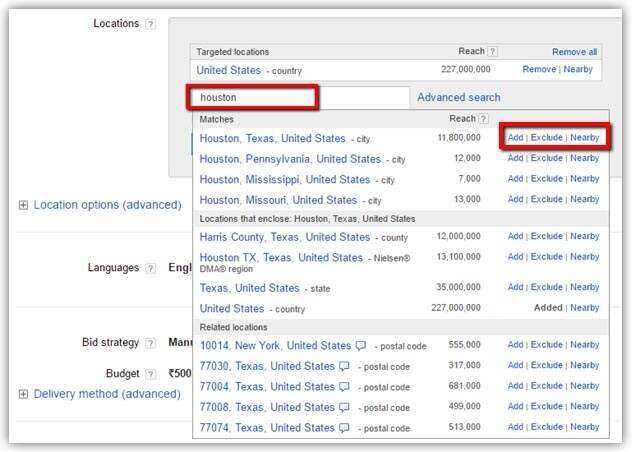
Here, you have three options for each location:
1. Add- When you click add the location you have entered will be added to your list of targeted location.
2. Exclude- You should click exclude if you want to stops your ad from appearing in any location.
3. Nearby- This helps you add list of nearby locations.
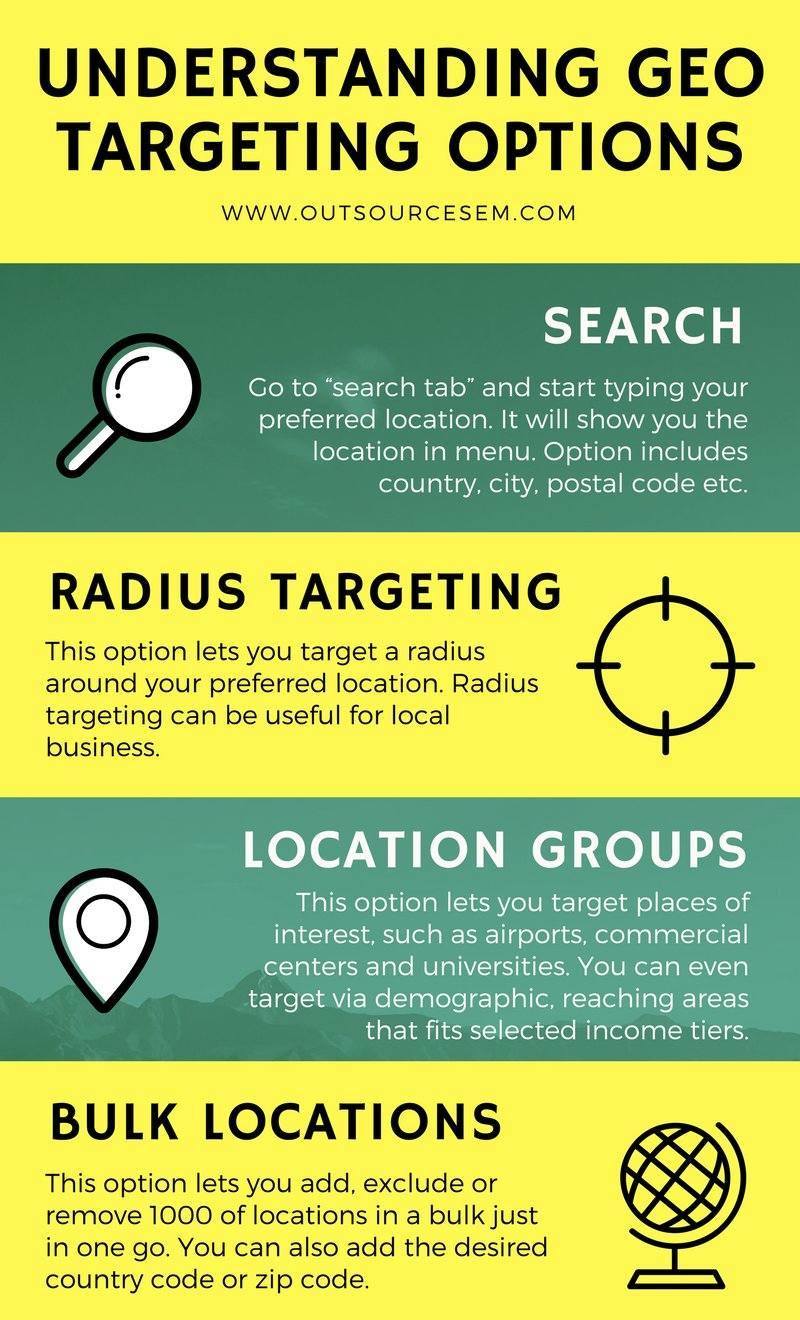
• Click on “advanced search” to know more features. You can see all your targeted locations being highlighted on the map, also you can zoom in and zoom out to see the sub location more clearly.
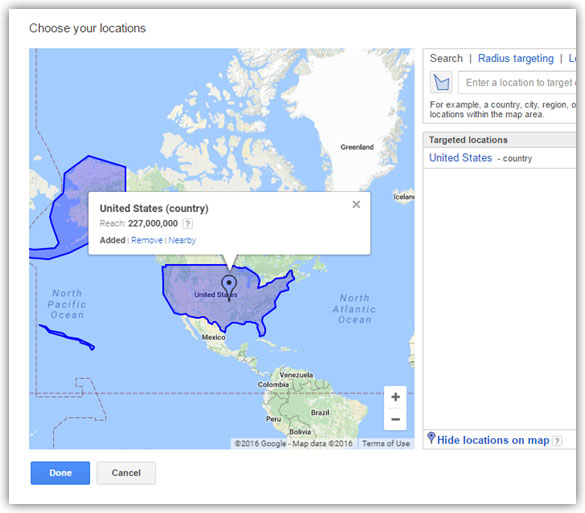
• Radius targeting- This option lets you target a radius around your preferred location. Radius targeting can be useful for local business. You just have to enter the preferred location and set a mile radius around that location.

Google Ads also gives you the option to generate custom radius. Go to blue maps pin icon and click on the preferred location at the map, which will be the midpoint of the radius. You can adjust this midpoint, by just clicking around it. You can also adjust the mile/kilometer radius according to your need.
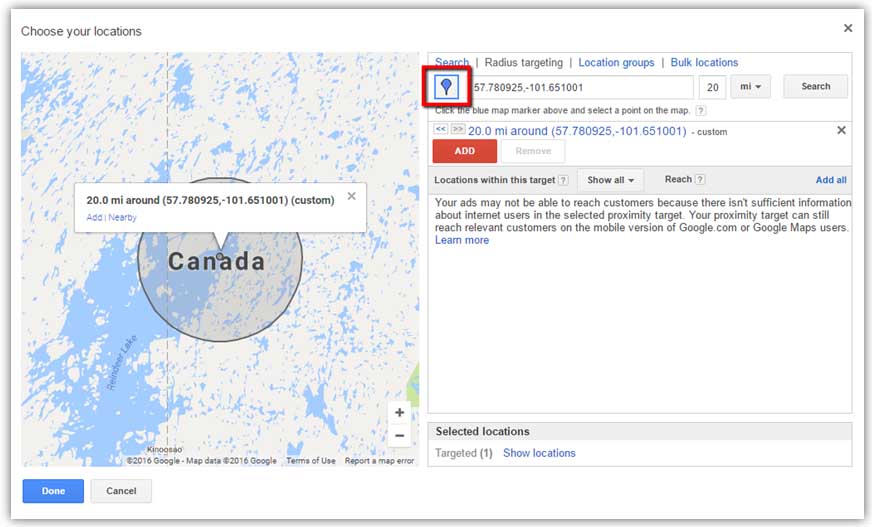
• Location groups- This option lets you target places of interest, such as airports, commercial centers and universities. You can even target via demographic, reaching areas that fits selected income tiers. Remember that these options allows you narrow your targeting. In other words, we can say that it prevents people outside of your chosen locations and other criteria.
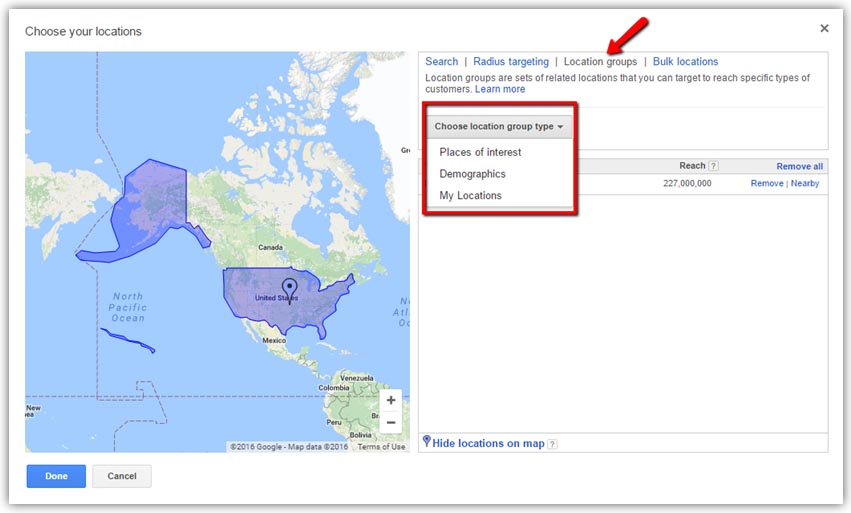
• Bulk locations- This option lets you add, exclude or remove 1000 of locations in a bulk just in one go. You can also add the desired country code or zip code. All you need to do is one of these two things- just type or paste the locations you want to target.
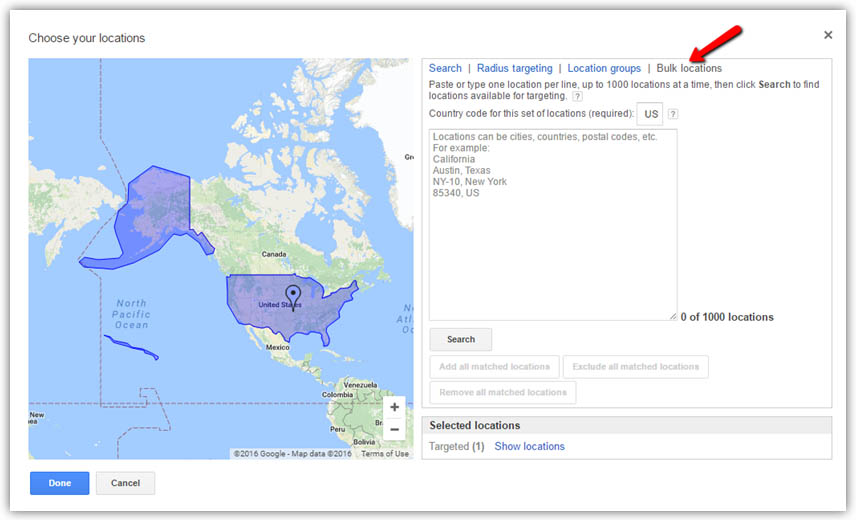
• Click on “Done” to apply the changes.
Optimizing your geo-targeted campaign
As soon your campaign starts running, you can check which locations are generating the most traffic. Go to the Settings tab within the campaign for which you’d like to see stats and select “Locations”. Here you can view standard information such as clicks, impressions, average cost-per-click (CPC), and average position, as it applies to each of your specified locations.
After analyzing campaign performance for different targeting locations, you can then apply bid adjustments in “Bid adj” column to increase or decrease bids by a percentage.
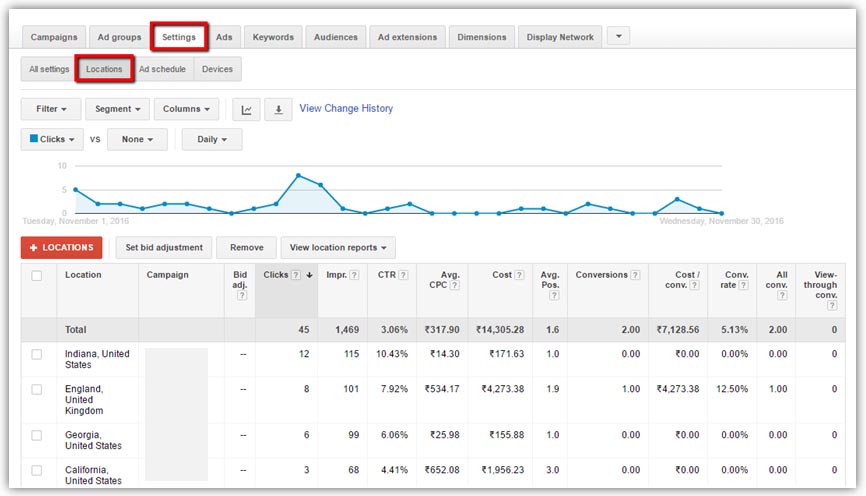
Go to “Search terms” under “Keyword tab” and here you’ll be able to see Search terms report to identify which keyword searches activated your ads. If any keyword is discovered which is of not your target locations, activating your ads. Then, you can exclude these keywords by ticking the check box next to them and then choosing Add as negative keyword.
Tips and tricks
• Always target the locations where your potential customers are.
• Exclude certain locations, because it can be as important as targeting them.
• Try to include the name of your target location in your ad, if possible in the title.
• Enable location extensions and call extensions in your local ads so that customers will be able to find and contact you more easily.
Conclusion
Following these steps, tips and tricks can help you run a fairly successful Google Ads campaign. As we all know, Google Ads offers a wide range of options for geographic targeting. You can utilize them to specify the regions where you want your ads to be exposed and where to not according to your business. So that you could highly target your audience for maximum profit. Additionally, you can also modify campaigns by adding bid adjustments, using income targeting, and setting location options. Also make sure that you’re targeting the region most significant to your business, brainwave how you can work further in geographic targeting features to best reach your audience. For a comprehensive understanding and application of geo-targeting, you can hire a digital marketing firm who are expert in conducting geo-targeting and increasing the visibility of your offerings to maximize conversion rate. They also conduct PPC audit and provide detailed PPC reports, lead generation services, remarketing ads, video ads, mobile ads, competitor analysis and market research services to improve your brand awareness.
